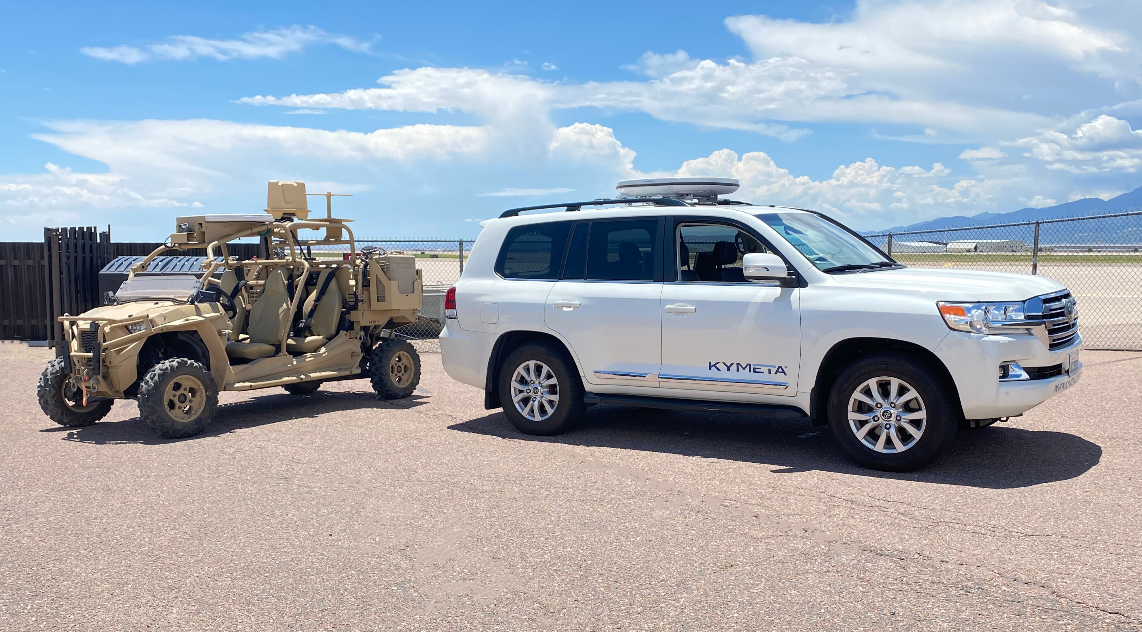There are many exciting developments in the Satellite communication on the move (COTM) market. Among these developments, the most promising might just be the launch of flat panel antennas (FPAs) which aretransforming the Land, Maritime and Aeronautical COTM markets. FPAs may just supplant the traditional parabolic antennas, if the cost and economics would make it a feasible solution.
COTM on the move historical started with L-Band satellite providers such as Inmarsat, Globalstar and Iridium providing voice and low bandwidth data (128 Kbps up to 1 Mbps) connectivity worldwide. Today, new innovative technologies are coming to market that will dramatically change COTM and COTP services.
Innovative Solutions
In the last ten years the development of high-powered Ku- and Ka-band satellites FPA solutions initially for the security and defense market has significantly enhanced the effectiveness of COTM solutions by providing higher bandwidth and greater flexibility.
FPAs are now in the commerical market with the with various companies providing or developing FPAs for COTM and COTP solutions such as Kymeta™, C-COM Satellite Systems, ThinKom Solutions, NXTCOMM, Isotropic Systems, AvL Technologies among others.
“FPAs is probably one of the most significant breakthroughs in the satellite industry in the past decade. It is exciting to see this technology originating as far back as 1950s finally coming to fruition in our time. These electronically steered antennas pave the way towards commercial non-geostationary satellite orbit (NGSO) constellations, which is another exciting development,”said Maxim Usatov, Chief Technical Officer and Founder of BusinessCom.
Kymeta™ launched in the 4th quarter of 2020 its second generation FPA, the Kymeta™ u8 electronically steered satellite antenna platform and
 |
| Kymeta’s u8 terminal can be used for various COTM applications including military, government, public safety and commercial markets. (image courtesy of Kymeta) |
Kymeta Connect™, a unique offering that makes satellite and cellular hybrid connectivity as easy to purchase as a mobile plan. The u8 is a comprehensive connectivity solution that enables trusted, secure communications on the go with a host of new innovative features. The new terminal provides a complete connectivity solution for on-the-go communications when and where you need it. The Kymeta™ u8 covers the full Ku-band and it designed to be LEO upgradeable. It also supports MEO and GEO satellite constellations.
“The Kymeta™ u8 portfolio is the only land-based solution of its kind that fully supports always-on broadband communications over both satellite and cellular while mobile. This core feature which allows you to connect to a satellite while on the move, combined with our back-end support suite of services, Kymeta Connect, results in a seamless customer experience and a product that no other satellite antenna company offers today,” said Bill Marks, Chief Strategy Officer (CSO) of Kymeta™.
Key Drivers
One of the key drivers for COTM and COTP solutions is the increasing demand for mobile broadband connectivity, which has accelerated as a result of the global COVID-19 pandemic. “The global demand for mobile broadband connectivity continues to grow, driven by the insatiable consumption of data as well as the growth in new Internet of Things (IoT) applications. Cellular networks alone will not provide the seamless coverage needed to satisfy always-on communications on the move. The combination of satellite and cellular technologies deployed across a variety of different uses cases will be a solution to that growing demand in only a matter of time. There remains a growing demand for mobile connectivity that cannot be met by the cellular industry alone. This demand creates a market for new satellite products and services that can only be met through innovation,” said Kymeta’s Bill Marks.
A recent report by NSR entitled “Land Mobile via Satellite, 8th Edition” revealed that the satcom land mobile market continues to have a strong future, with over 750,000 new in-service units coming over the next decade, across nine distinct applications. Many of these units will trend towards higher ARPU levels with enhanced revenue prospects, despite a near-term COVID-19 revenue dip. Connected vehicles play a major role in long term growth, as broadband overtakes narrowband demand across all land mobile applications, according to NSR.
The report found that total revenues in the Land Mobile market will increase from US$ 1.39 billion in 2019 to US$ 2.98 billion in 2029, a growth rate of 7.9% across the decade, despite moderate COVID-19 impacts in the short term.
“As the connectivity marketplace becomes more competitive, the operators are becoming increasingly demanding. Commercial and military customers alike are looking for higher speeds and more competitive rates for bandwidth. The way to consume this data is changing as well and that puts constraints on the operators’ networks, as different platforms require new antenna types or ways to purchase connectivity. Some can evolve their networks and expand their capabilities, looking ahead to 5G, and some are going to struggle, requiring even more innovation on the ground segment. Much of this evolution will drive Research and Development and innovation over the next five years. Another expected demand is standardization in the industry which is long overdue. The cellular industry went through this a decade ago and it is time for Satcom to make real strides in that direction as well,” said Kymeta’s CSO Bill Marks.
“Longer-term, NSR sees accelerated revenue growth driven by a fundamental shift from narrowband applications and towards broadband as a share of revenues” said Alan Crisp, NSR senior analyst and report author. “Greater COTP usage, and the growth of connected vehicle markets, all point to additional life being injected into land mobile. Inmarsat Land Xpress, Iridium Certus, LEO-HTS constellations and more all contribute to new revenue opportunities over MSS narrowband data and voice usage,” he added.
Another key driver for COTM and COTP is the influx of the new Low Earth Orbit (LEO) and Medium Earth Orbit (MEO) constellations that are deploying at full speed in this decade. Thousands of LEO and MEOs are coming online in the next few years from the likes of SpaceX’s Starlink, Amazon’s Kuiper and OneWeb, among others. The Non-GEO satellite systems has the potential to bring the COTM to the mass market.
Although not without its challenges, the Non-CEO constellations provide a unique advantage over GEO for COTM applications. Non-GEO systems ae far closer to earth than GEOs meaning they require less distance to travel, reducing latency and enabling higher data rates.
To shed light on this exciting market, Satellite Executive Briefing did a virtual roundtable of key executives from leading companies providing COTM solutions. The results of the roundtable discussion follows this article.
It is interesting to note, that the executives who particpated in the roundtable were all in agreement that one of the key drivers for the COTM market will be the constellations in Non Geostationary Satellite Orbits (NGSO) ie. LEO and MEO. The deployemnts in the next 3-5 years will be crucial for the long-term viability of the NGSO constellations and COTM providers intentd to make use of this opportunity.
-------------------------------------------

Bernardo Schneiderman is a correspondent of Satellite Markets and Research and the Principal of Telematics Business Consultants. He can be reached at: info@tbc-telematics.com





